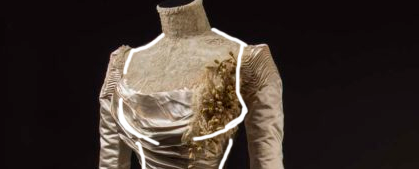Wow to have a figure like that, and to wear a dress as beautiful as this! Body padding for shape has been used strategically for thousands of years.
Because, guess what, they didn’t necessarily have this figure either.
A lot has been written about tight corsets and making your waist as small as possible- but in this post I’ll be talking about layers and padding. Padding the figure has been an essential part of achieving a fashionable silhouette since silhouettes were fashionable. Add a some decoration to make the shoulders look wider, wear a hat to look a bit taller and elongate the figure. Padding is vital to getting a great look while remaining comfortable.
Case in point:
Cream silk satin wedding dress with a wax orange blossom corsage and needlelace trimmings, 1900. Worn by Emily Poor. Courtesy Fashion Museum Bath

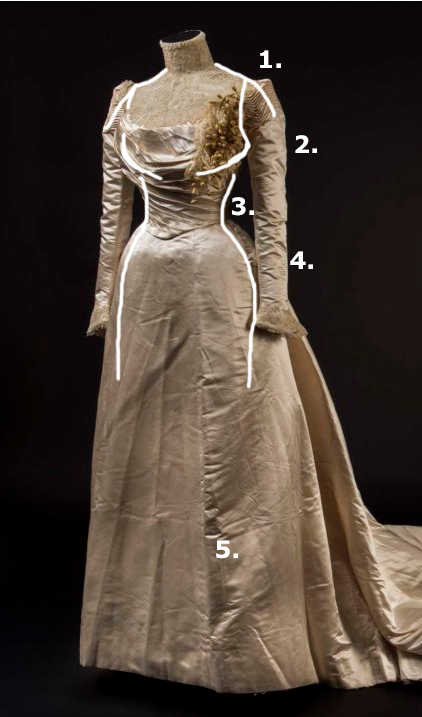
1. Shoulders
This gown shows a clever method of extending the shoulder line outward by using a folded, pleated sleeve. I have drawn in where the natural curve of the should would be. The horizontal pleating on the sleeve cap, and each sleeve extending out to a point adds width to the shoulders. The wider shoulders brings attention to the neck and collarbone, and gives the neckline of the dress an open appearance without showing any skin.
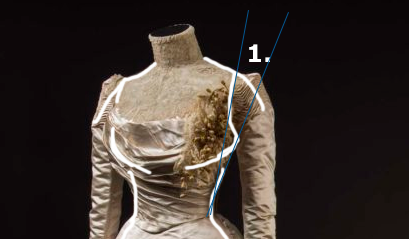
Compare how slender the waist looks with the wide sleeve, vs where I have drawn the natural shoulder line. Already the waist looks smaller by comparison.
2. Bustline
The bustline of this dress has some padding/layers of fabric and decoration going on to enhance the figure. The gowns has several large drapes of the white satin, over lace, and a lovely big bunch of wax orange flowers.
Under the gown would be the following:
- Chemise or shift – likely highly decorated with lace
- Corset- often there were small pads in the bust area of these corsets for support and bust shaping.
- Corset cover- this would have had ruffles and lace to add fullness to the bustline as well.
- Petticoat- sometimes more than one
- Gown
The bodice of the gown would have been lined with at least one layer of silk or linen, likely more- with one layer of lining directly behind the white saton and then a foundation lining with a few pieces of boning stitched in to hold the bodice in shape.
So many layers!
The wearer of this gown would have had between 5-10 layers of fabric, lace, corset coutil, lining fabric, and satin to shape her figure. This all contributes to the soft, full bustline of the gown, even if the wearer was slim through the bust herself.
3. Waist
Looking at the body lines I have drawn in, the waist of this dress doesn’t look overly small. The wearer is certainly wearing a corset, but not an extreme waist reduction.
4. Hips
The hips are the next illusion.
The added fullness at the hips would have been achieved by layers of petticoats, and by slim hip pads worn under or over the back waist of the corset. Why wear hips pads? Because they make your waist look smaller!
I have drawn in an estimated hip line here. A very slender person would have even slimmer hips. Again the size of the dress at the hips is making the waist look smaller. Take a look at how adding lines points out the difference.
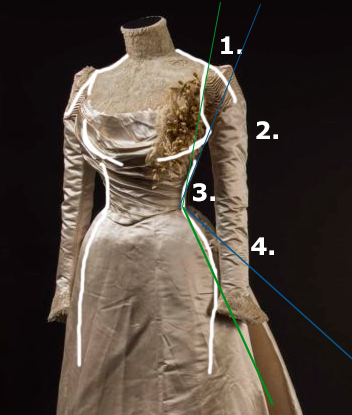
5. Hemline and train
With the bottom blue line I highlight how the shape from the waist to hip is extended through the gentle fullness of the skirt and through the train. This gown has slim, bell shape skirt- but it is easy to imagine a full hoop skirted look here.
Removing the gown image and just looking at the lines shows the increase in curve very clearly. Notably, this difference in the curve of the entire figure is down with no change to the waist at all. This is all with the structure and padded shape of the garments themselves.
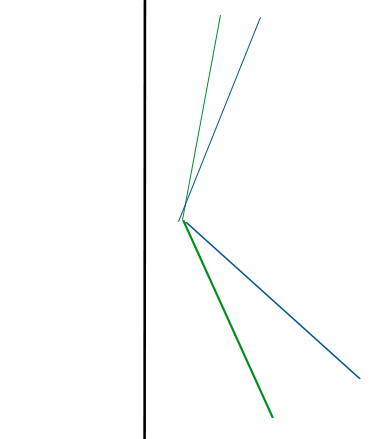
In summary:
The body padding for shape, especially historic clothing like this gown, is quite often not due to compressing the body, but adding fullness to the figure instead. Certainly compressing the waist is part of the silhouette, but it is one technique of many.
Forgoing the under structure of a dress and only creating/wearing the outer layer will not achieve the desired look. Remove the wide shoulders and soft layered bustline and the waist will not look as small and curvy. Take away the underskirts and possible hip and body padding and the waist and hips will look less curvy, and overall more rectangular. A waist is small *in comparison* to the rest of the figure, whether or not there is a corset involved.
